Warning: pic heavy, as usual. 
A little over two years ago, I reviewed a couple of the inaugural lights from Skilhunt – the Defier X1 and X3. Earlier this year, I reviewed the K10 and K11 (both 1x18650 lights). Today, I have the new Defier S2 on hand.
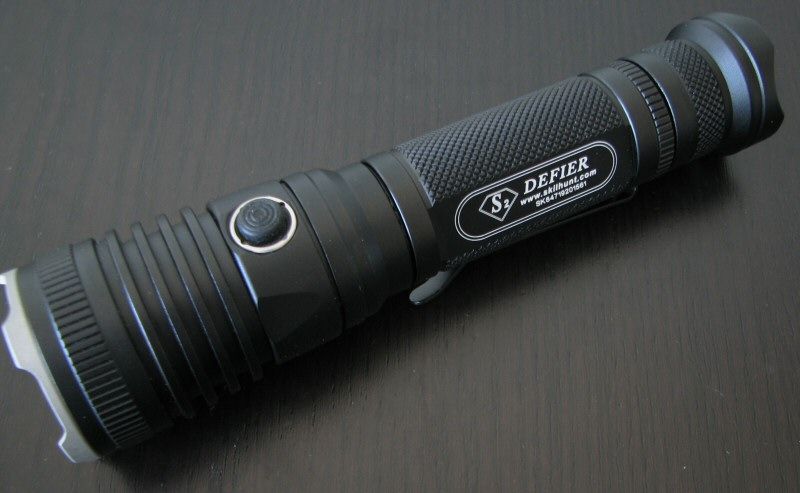
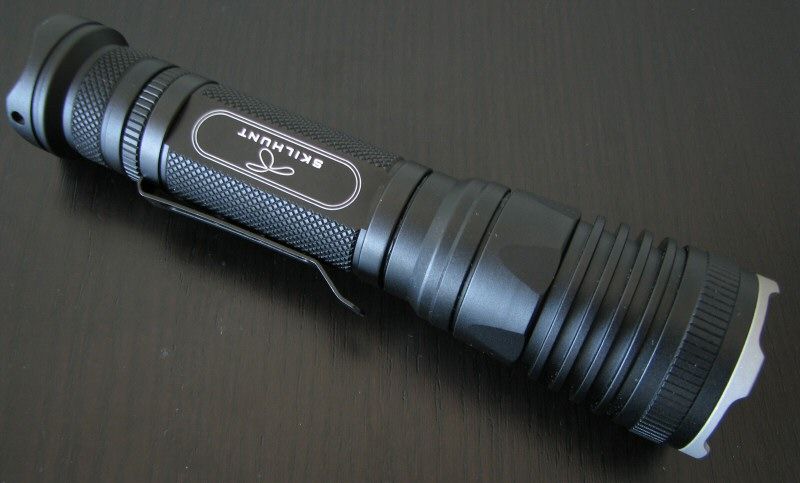
Let's see how the model has evolved - and how it compares to other recent lights in the popular 1x18650, 2xCR123A class of XM-L2 lights.
Manufacturer Reported Specifications:
(note: as always, these are simply what the manufacturer provides – scroll down to see my actual testing results).
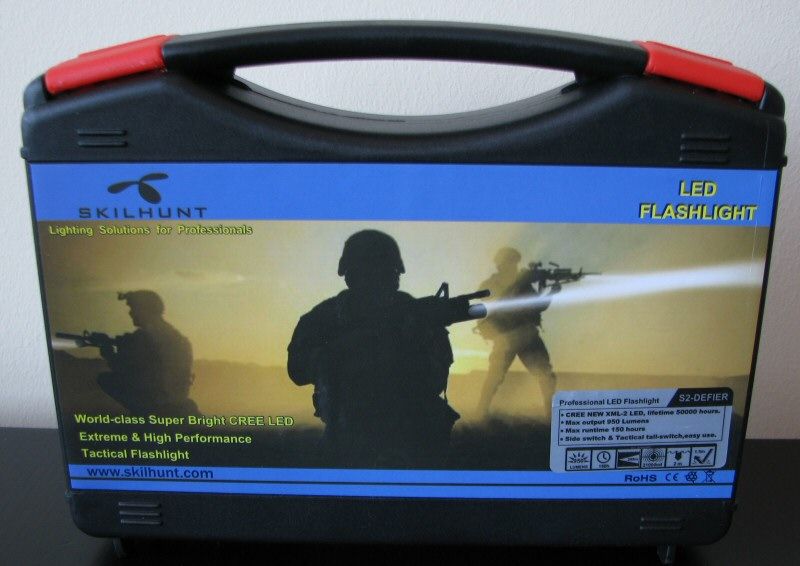
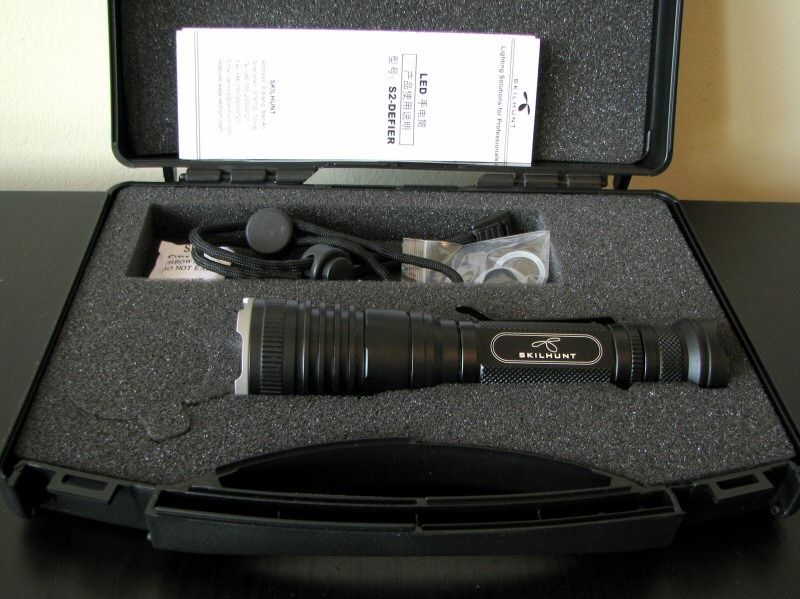
The S2 comes in a presentation-style plastic carrying case, similar to the ones from other makers. Included with the light are spare O-rings, extra tailcap button cover, good quality lanyard, and manual.
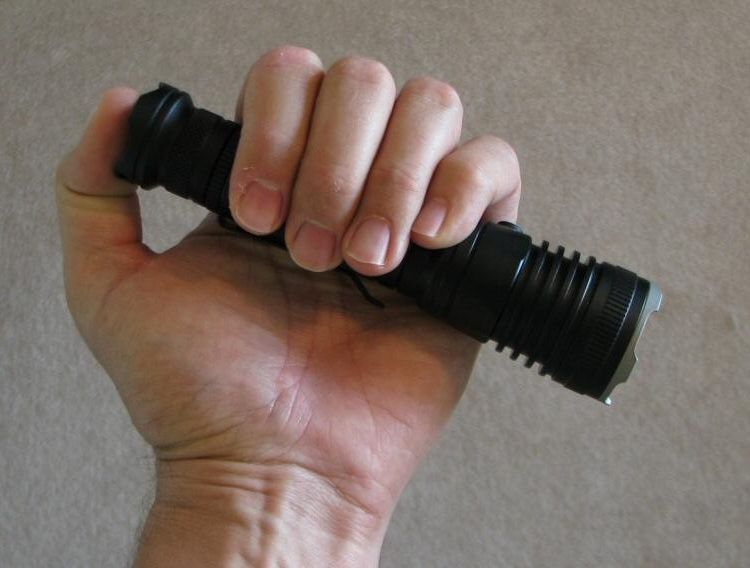
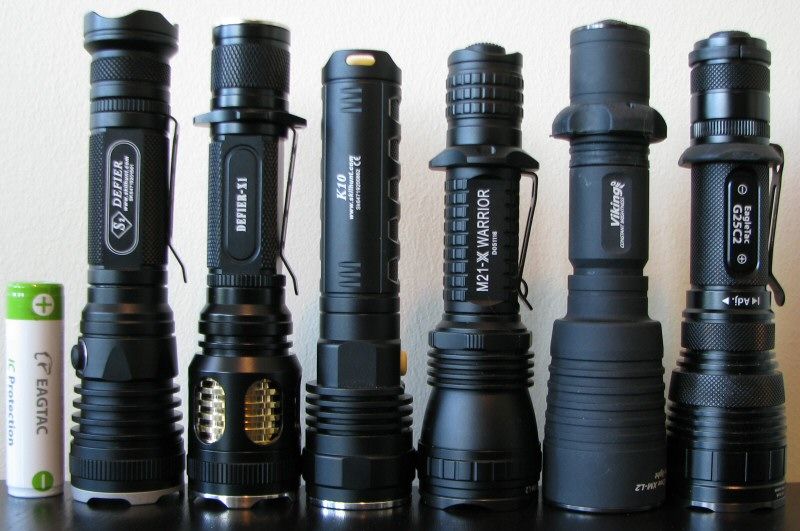
From left to right: Eagletac Protected 18650 2400mAh; Skilhunt Defier S2, Defier X1, K10; Olight M21-X; ArmyTek Viking Pro; Eagletac G25C2 Mark II.
All dimensions directly measured, and given with no batteries installed:
Skilhunt S2: Weight: 133.0g, Length 153.0mm, Width: 36.0mm
Olight M22: Weight: 148.4g, Length: 144.8mm, Width: 41.2mm (bezel)
Olight M21: Weight 119.5g, Length 145.2mm, Width 38.5mm (bezel)
Olight M20: Weight: 120.0g, Length 144.0mm, Width: 35.7mm (bezel)
Eagletac G25C2-II (stock): Weight 141.0g, Length: 150.6mm, Width: 39.6mm
Eagletac TX25C2: Weight 93.6g, Length: 120.4mm, Width (bezel): 31.6mm
Klarus XT11: Weight 133.0g, Length: 148.8, Width (bezel) 35.0mm
Nitecore MH25: Weight: 145.4g, Length: 160mm, Width (bezel): 40.0m
Rofis TR31C: Weight: 180.7g, Length: 153.0mm, Width (bezel): 39.8mm
Thrunite TN10: Weight: 154.7g, Length: 145.5mm, Width (bezel): 35.1mm
Overal dimensions are similar to other lights in this class.
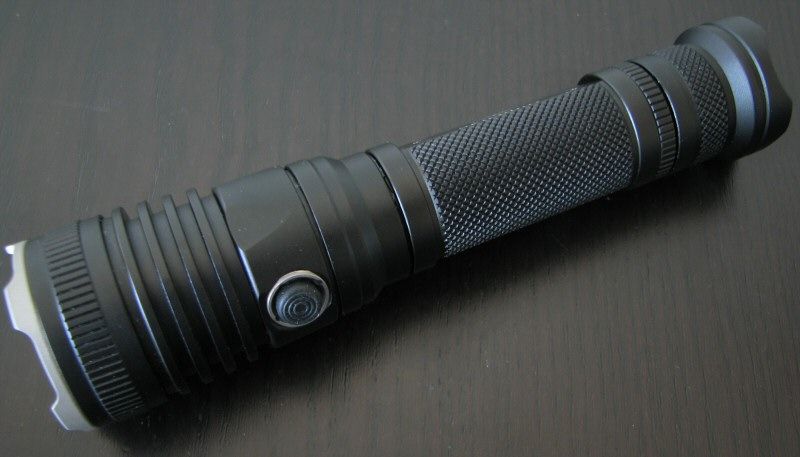
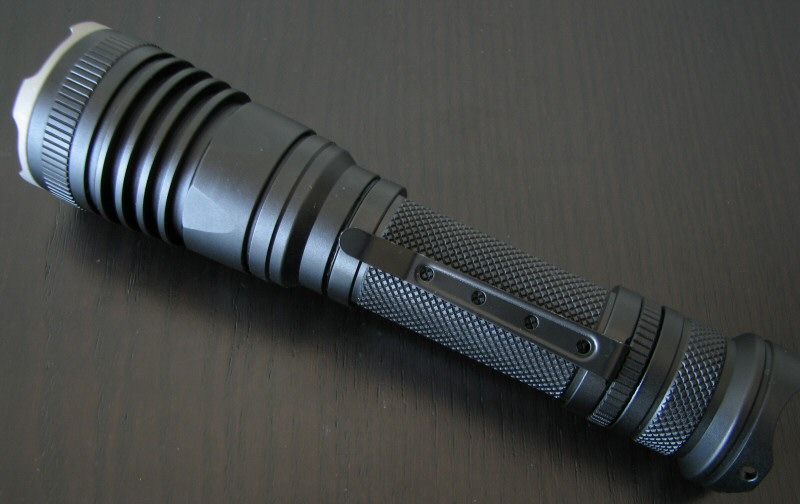
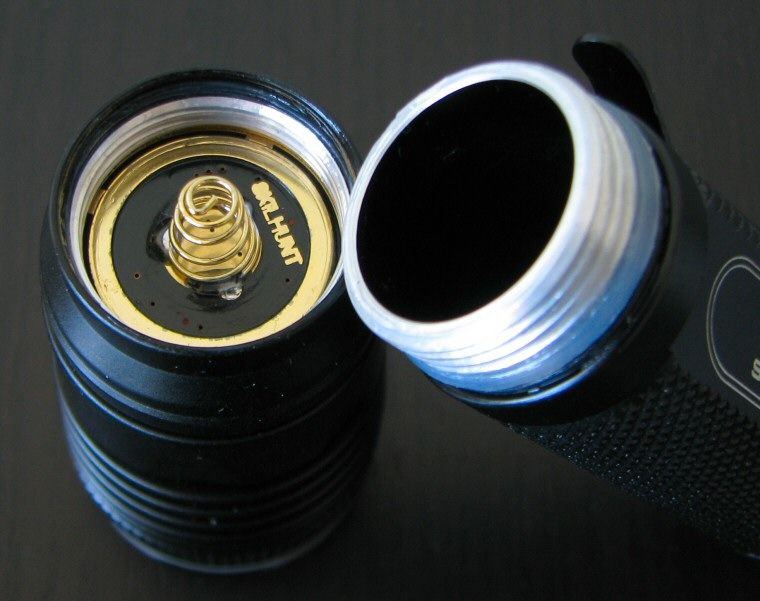
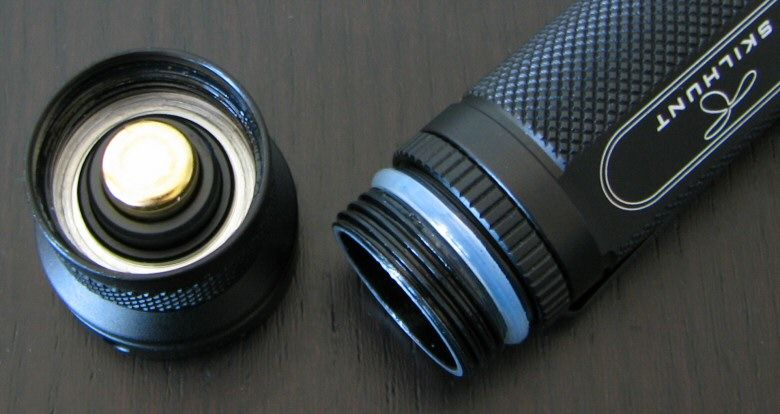
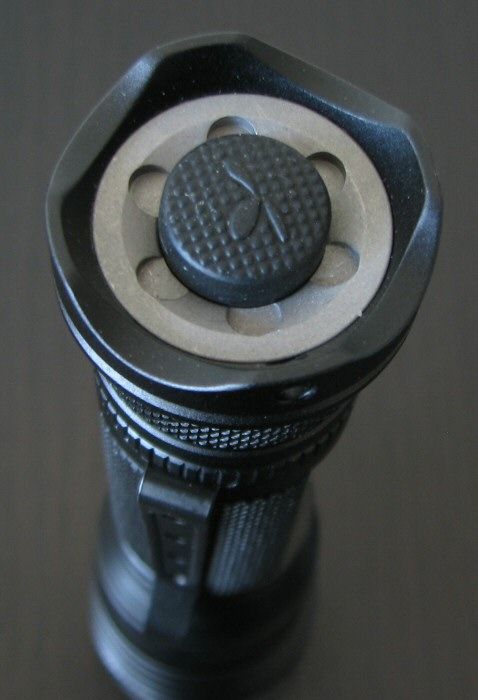
The appearance of the S2 has changed somewhat from the earlier Skilhunt models (i.e., a little less "flair" in the head now). But the overall build and design is actually pretty consistent with the earlier Defiers (and with other lights of this class).
Anodizing is a matte finish, hard anodized (i.e., type III). Body labels are bright white and sharp against the black background. The S2 has knurling on the body and a band on the tailcap – but it is not very aggressive. The head has concentric ring fins - likely to help with heat dissipation, but also serve to enhance grip. With the pocket clip installed, I would definitely consider grip to be above average for the class. Note that the clip can be removed, and there is a screw-on ring cover for the clip attachment point.
Screw threading is standard triangular cut, but quite thick and of good quality. Threads are anodized at the tailcap to allow for lock-out. :thumbsup:
There is a spring mounted on the positive contact board in the head, so flat-top cells can be used In the light.
Like the earlier Defiers, there is an extending region around the tailcap switch, scalloped to facilitate finger/thumb access to the switch. Tail switch is a forward clicky, with traditional feel (used for on/off control). The light can tailstand stably.
There is a secondary switch in the head, used for mode switching. This is an electronic swtich, with typical feel for that class. The black boot cover projects a fair amount, making it relatively easy to find by touch.
The stainless steel bezel has a matte gray finish, rather distinctive. It matches the gray retaining ring in the tailcap.
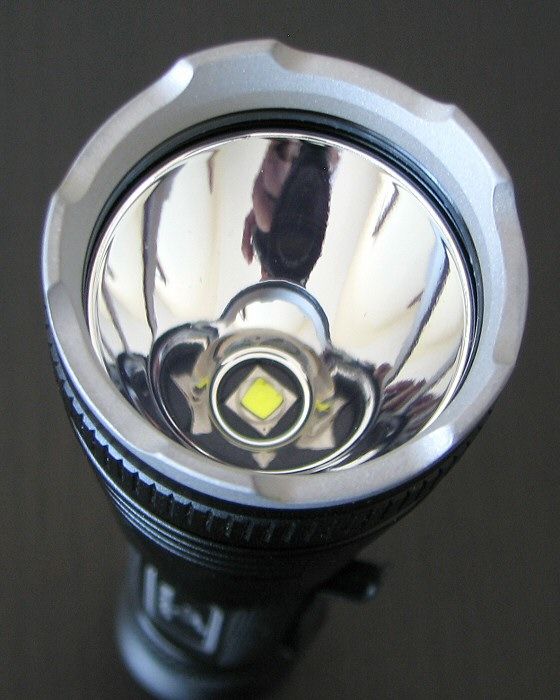
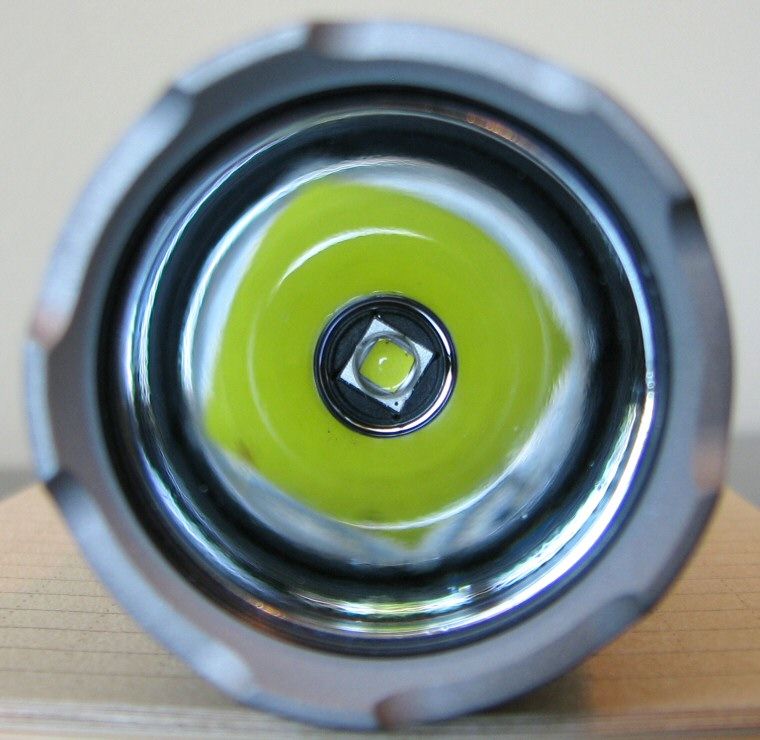
Reflector is smooth, and fairly deep. Coupled with the XM-L2 cool white emitter (which was well centered), I would expect reasonably strong throw. Scroll down for beamshots.
User Interface
Turn the light on/off by the tailcap forward clicky switch (press for momentary, click for locked-on).
There are four main output levels controlled by clicking the secondary electronic switch in the head. Mode sequence is Lo > Med > Hi > Turbo, in a repeating loop. The light has mode memory, and retains the last level set when you turn it off/on.
Press and hold the secondary mode switch to jump to Strobe. Press and hold again to advance to SOS. You can exit these blinking modes at any time by a click of the secondary switch. Note that mode memory applies to strobe modes as well (i.e., if you turn off the light in strobe, it comes back on that way – even after a battery change).
Video:
For information on the light, including the build and user interface, please see my video overview:
Video was recorded in 720p, but YouTube typically defaults to 360p. Once the video is running, you can click on the configuration settings icon and select the higher 480p to 720p options. You can also run full-screen.
As with all my videos, I recommend you have annotations turned on. I commonly update the commentary with additional information or clarifications before publicly releasing the video.
PWM/Strobe
One of the main issues with the early Skilhunt lights was the very visible low-frequency pulse width modulation (PWM) on the lower output modes. I am happy to report that I can detect no sign of PWM on the new S2 – neither by eye, nor on my sound card oscilloscope.
There is some weak 900 Hz noise on Lo/Med/Hi detectable on my oscilloscope, but it is not visible to the eye:
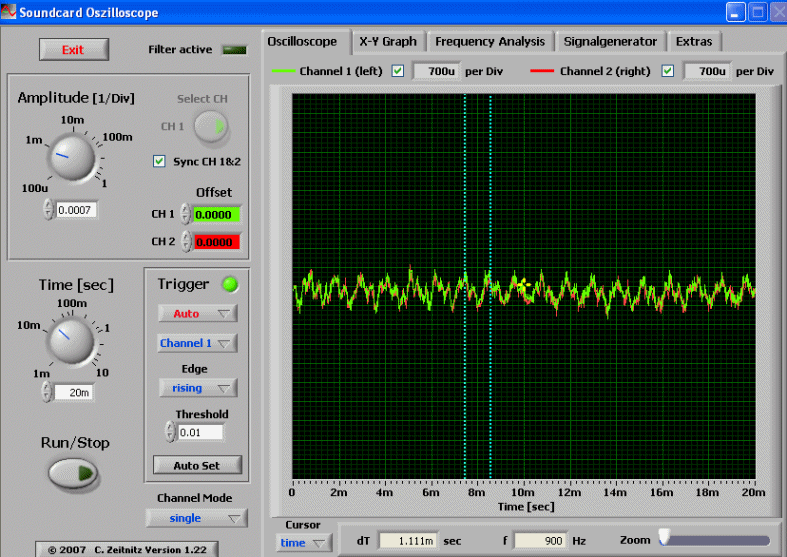
Again, this is not PWM, and I can see no visible sign of it (even when shining on fan). All intensity levels seem completely stable and flicker-free.
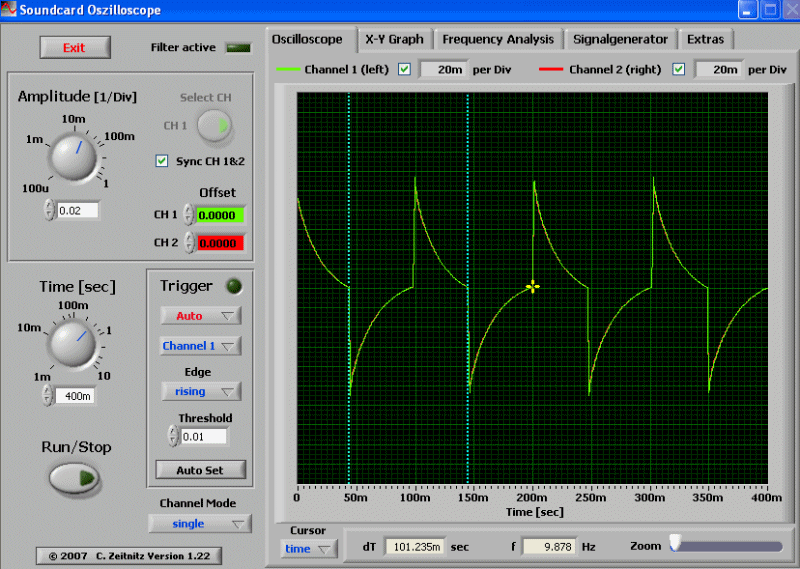
The strobe is a fairly typical fast "tactical" strobe, of 9.9Hz frequency.
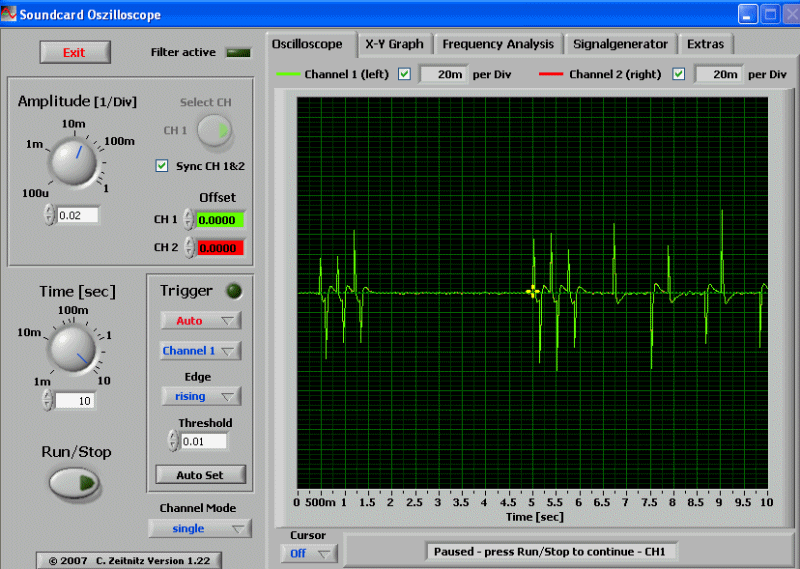
SOS mode is also fairly typical.
Beamshots:
For white-wall beamshots below, all lights are on Max output on an AW protected 18650 battery. Lights are about ~0.75 meter from a white wall (with the camera ~1.25 meters back from the wall). Automatic white balance on the camera, to minimize tint differences.
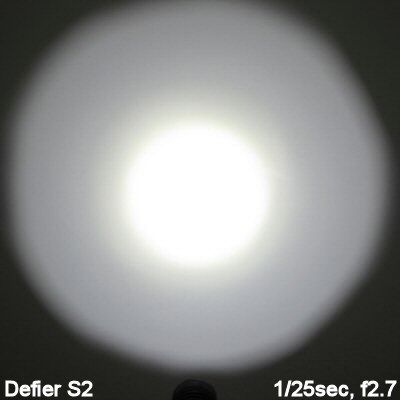

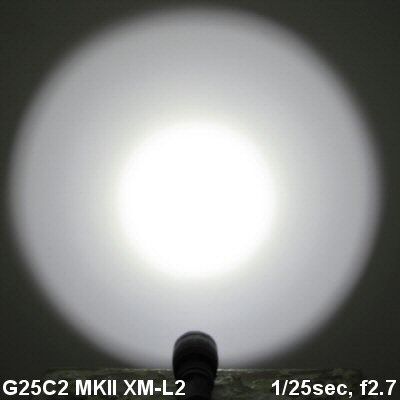
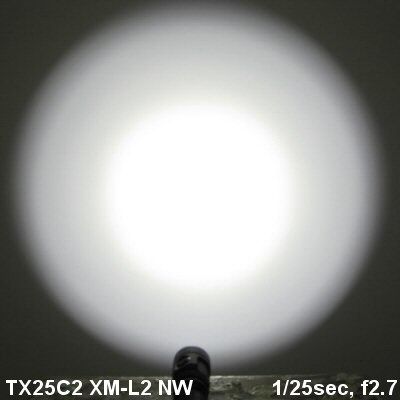
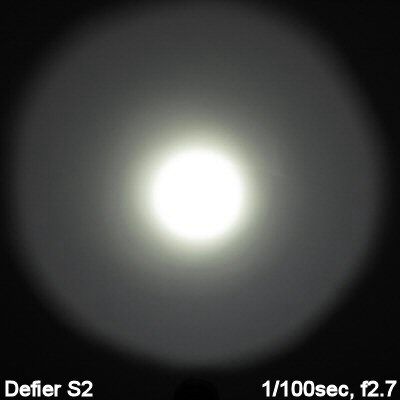
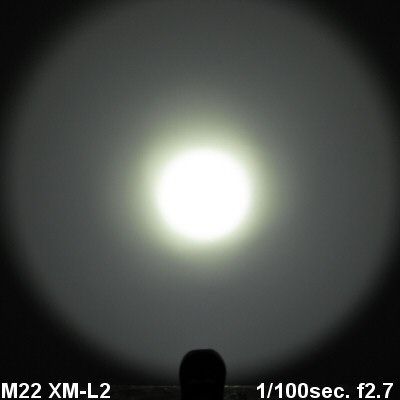
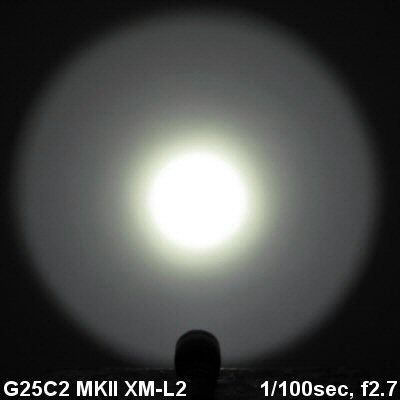
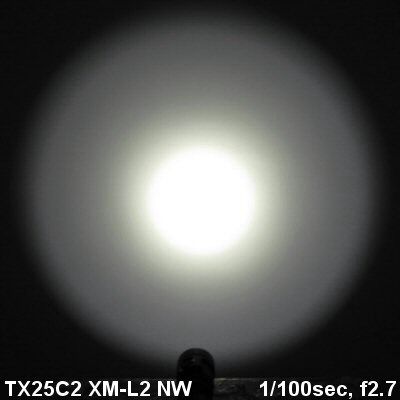
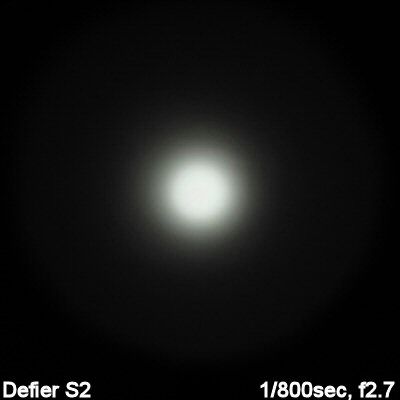
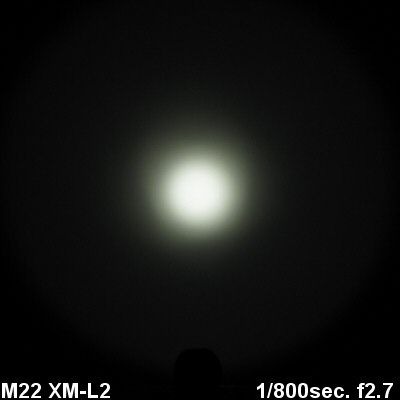
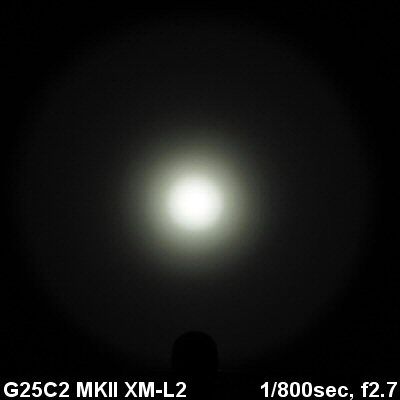
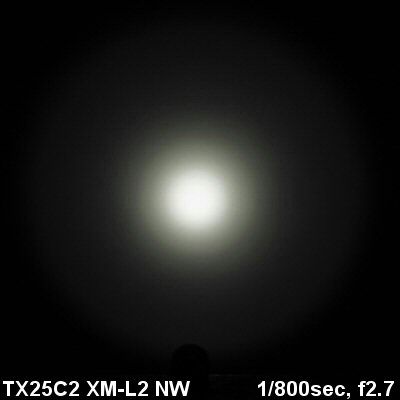
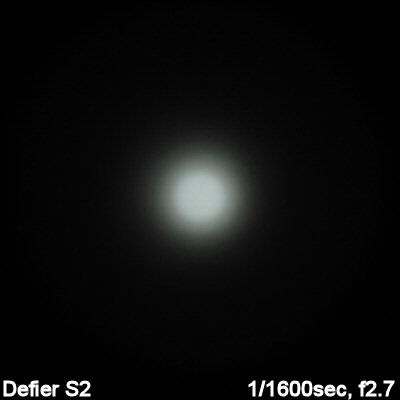
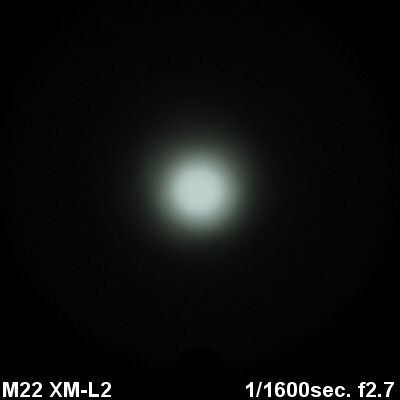
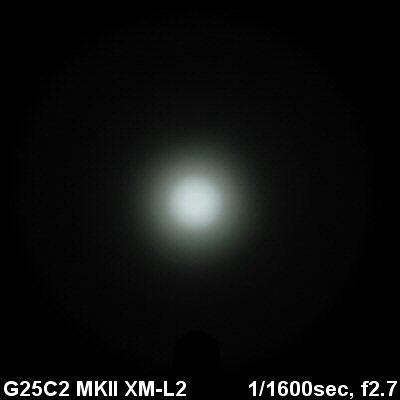
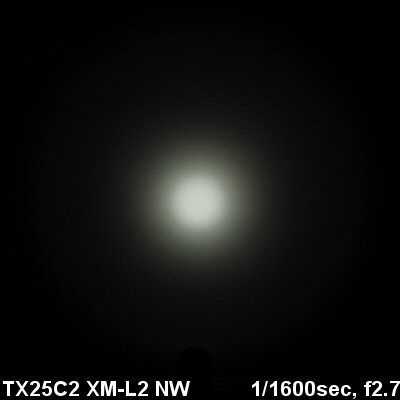
Beam pattern and overall output are very similar to the Olight M22 and Eagletac G25C2-II XM-L2.
Testing Method:
All my output numbers are relative for my home-made light box setup, as described on my flashlightreviews.ca website. You can directly compare all my relative output values from different reviews - i.e. an output value of "10" in one graph is the same as "10" in another. All runtimes are done under a cooling fan, except for any extended run Lo/Min modes (i.e. >12 hours) which are done without cooling.
I have devised a method for converting my lightbox relative output values (ROV) to estimated Lumens. See my How to convert Selfbuilt's Lightbox values to Lumens thread for more info.
Throw/Output Summary Chart:
My summary tables are reported in a manner consistent with the ANSI FL-1 standard for flashlight testing. Please see http://www.flashlightreviews.ca/FL1.htm for a discussion, and a description of all the terms used in these tables. Effective July 2012, I have updated all my Peak Intensity/Beam Distance measures with a NIST-certified Extech EA31 lightmeter (orange highlights).
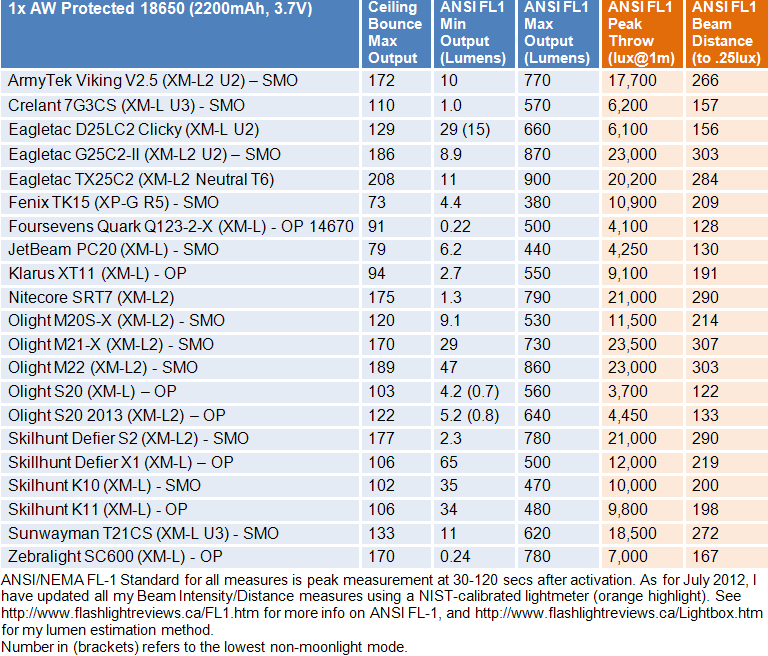
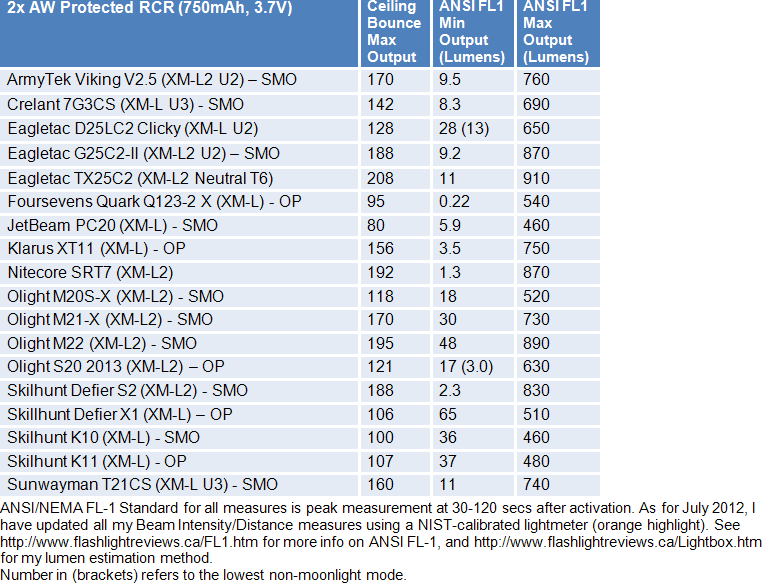
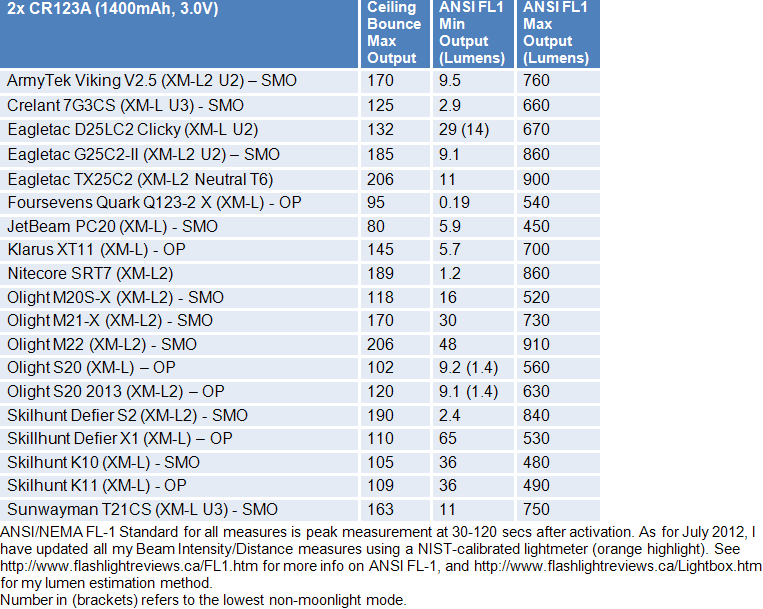
The S2 is slightly more highly driven on 2xCR123A/RCR compared to 1x18650, but this is common for many lights in this class. Overall output and peak throw of the Defiser S2 are very similar to my other recent heavily-driven XM-L2 lights (e.g., Olight M22, Eagletac G25C2-II, TX25L2, etc.), especially on 2x battery sources.
My peak intensity throw and beam distance measures match the reported ANSI FL-1 specs.
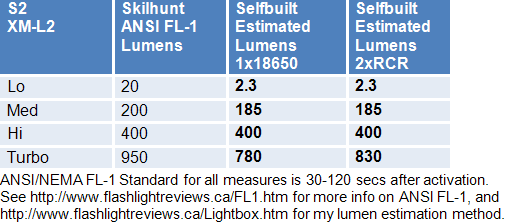
Overall, my lumen estimates are pretty close to Skilhunt's (although my Lo mode seems lower than expected).
As always, it bears repeating that my estimated lumen scale is just that - an estimate, based on a consistent calibration of my lightbox. But even though the absolute value correlation is unknown, the relative comparisons still hold. All I can really say is that one light is higher or lower than another, by a certain relative percentage. So please don't get hung up on the absolute values of the estimates, or on small relative percent changes.
Output/Runtime Graphs:
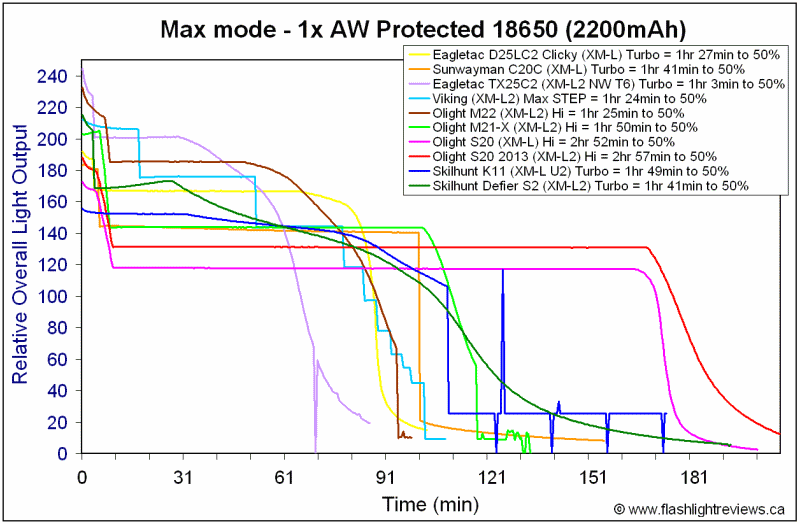
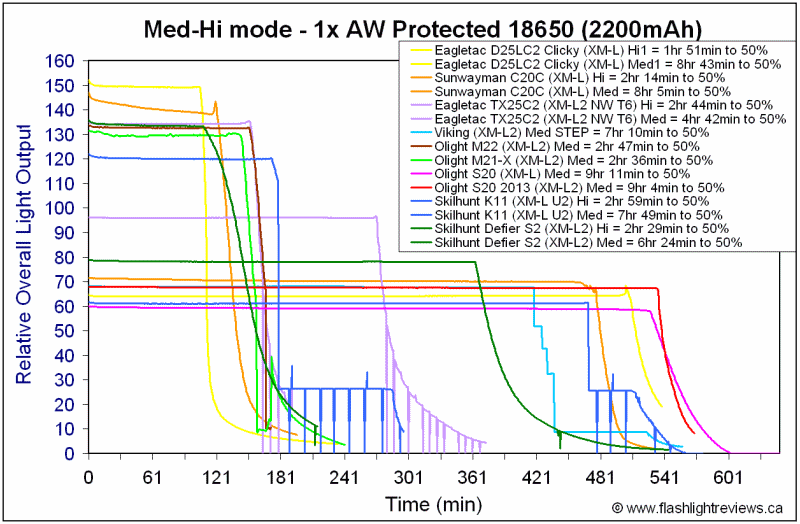
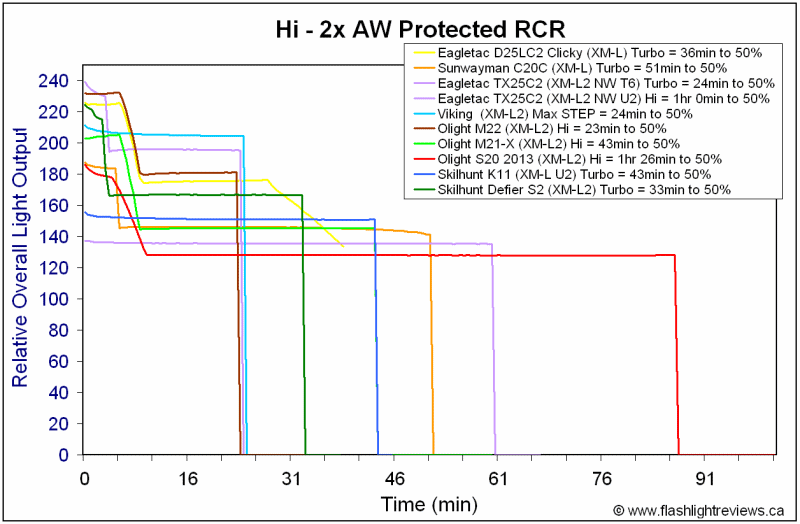
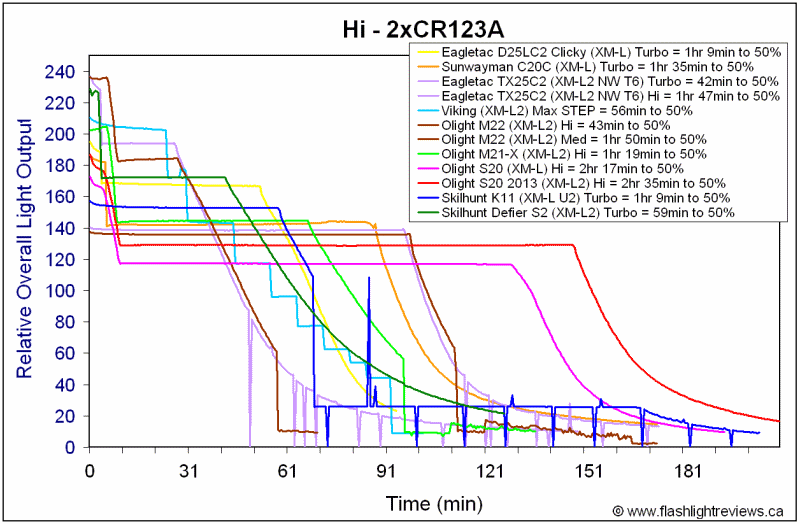
Like many high-output lights, the S2 has a defined step-down on Turbo (after 3 mins of continuous runtime in this case). On 1x18650, the light maintains regulation for as long as it can after this step-down, and then drops into direct-drive as the battery nears exhaustion (i.e., a fairly typical pattern). The light is fully flat-regulated on 1x18650 on the lower levels (and on all levels on 2x battery sources).
On all batteries, overall efficiency is very good - at all output levels tested - consistent with a current-controlled light.
And again, you can see that Skilhunt's runtime specs seem pretty for 18650. Note that ANSI FL-1 standard is time to 10% output, and most manufacturers use higher capacity cells than mine above. I am confident that 3100mAh or 3400mAh 18650 would meet the official runtime specs.
Potential Issues
The light is not as compact as some 1x18650 lights.
You have to use the secondary switch on the head to change modes (i.e., changing hand grip).
Default package lacks a holster and diffuser.
Preliminary Observations
The Skilhunt Defier S2 fits right in with the established brands in the highly-driven 1x18650, 2xCR123A/RCR class. :wave:
Performance-wise, there isn't much to differentiate the Defier S2 from the Olight M22 or Eagletac G25C2-II – you get generally similar output levels, runtime efficiency, and beam patterns across all three lights. It's nice to see that Skilhunt has improved circuit performance to the same level as these popular current-controlled brands.
So what does differentiate the lights? Well, it really comes down to build, bundled extras, and user interface.
Starting with the latter, the S2 keeps the general Skilhunt dual-switch interface (i.e., forward tail click in the tail, electronic side switch in the head). I am glad to see PWM flicker is gone now, and the "blinky" modes remain hidden. But you can program the light to activate in strobe if you like (i.e., mode memory applies to blinky modes, a nice touch for those who like this). The Skilhunt dual-switch interface may appeal to those who don't like the head-twist or head-turn interfaces on some of the competitors.
Build quality and number of extras are quite reasonable, similar to the previous Skilhunt lights (i.e., I've always found the Skilhunt build quality to be pretty close to Olight/Foursevens level). The S2 could use a few more bundled extras though – apparently, a holster and diffuser are available as optional accessories, but I would like to see them bundled with the light.
Beam pattern is quite good – again, pretty much indistinguishable from the Olight M22 or Eagletac G25C2-II.
Output spacing is reasonable – I know some would have liked a higher Lo mode (but some prefer the lower Lo used here). :shrug: At least with four modes there's range to suit most people (and I like the Lo to Hi sequence).
All told, the S2 is a mature upgrade to the Skilhunt line. No, it doesn't have quite the same "bling" factor as some of the predecessor models, but it will fit in quite well with those who have a functional view of their lights. Basically, it offers another user interface to choose from in the high-output 1x18650, 2xCR123A/RCR class. :wave:
----
S2 was provided by Skilhunt for this review.
A little over two years ago, I reviewed a couple of the inaugural lights from Skilhunt – the Defier X1 and X3. Earlier this year, I reviewed the K10 and K11 (both 1x18650 lights). Today, I have the new Defier S2 on hand.


Let's see how the model has evolved - and how it compares to other recent lights in the popular 1x18650, 2xCR123A class of XM-L2 lights.
Manufacturer Reported Specifications:
(note: as always, these are simply what the manufacturer provides – scroll down to see my actual testing results).
- LED: Cree XM-L2 LED
- Four brightness levels (low-medium-high-turbo).
- Output/Runtime: Turbo 950lm (1.5hr), Hi 400lm (4hr), Med 200lm (10hr), Low 20lm (150hr)
- Supports 2xCR123A, 2xRCR (16340), 1x18650, 1x17670
- Beam intensity: 21,000cd
- Beam distance: 289m
- Waterproof: IPX8
- Impact resistance: 1.5m
- Operating range: 3V~9V
- Reverse polarity protection
- Side mode switch, tactical tail switch
- Removable stainless steel matt strike bezel
- Toughened ultra-clear glass lens with anti-reflective coating and diamond coating
- Anti-scratching premium type III hard anodizing, engineered anti-slip knurling
- Multi-level dissipating heat design, flashlight head integrated construction with high thermal conductivity
- Removable stainless steel clip
- Dimensions: Length 152mm/5.98in, Head diameter 36.8mm/1.45in, Body diameter 25.4mm/1.0in
- Weight: 133g (without battery)
- Included accessories: Operator manual, two spare o-rings, spare tailcap rubber boot, 550 paracord lanyard.
- Optional accessories: Filter, holster, 18650 extender tube
- MSRP: ~$90


The S2 comes in a presentation-style plastic carrying case, similar to the ones from other makers. Included with the light are spare O-rings, extra tailcap button cover, good quality lanyard, and manual.


From left to right: Eagletac Protected 18650 2400mAh; Skilhunt Defier S2, Defier X1, K10; Olight M21-X; ArmyTek Viking Pro; Eagletac G25C2 Mark II.
All dimensions directly measured, and given with no batteries installed:
Skilhunt S2: Weight: 133.0g, Length 153.0mm, Width: 36.0mm
Olight M22: Weight: 148.4g, Length: 144.8mm, Width: 41.2mm (bezel)
Olight M21: Weight 119.5g, Length 145.2mm, Width 38.5mm (bezel)
Olight M20: Weight: 120.0g, Length 144.0mm, Width: 35.7mm (bezel)
Eagletac G25C2-II (stock): Weight 141.0g, Length: 150.6mm, Width: 39.6mm
Eagletac TX25C2: Weight 93.6g, Length: 120.4mm, Width (bezel): 31.6mm
Klarus XT11: Weight 133.0g, Length: 148.8, Width (bezel) 35.0mm
Nitecore MH25: Weight: 145.4g, Length: 160mm, Width (bezel): 40.0m
Rofis TR31C: Weight: 180.7g, Length: 153.0mm, Width (bezel): 39.8mm
Thrunite TN10: Weight: 154.7g, Length: 145.5mm, Width (bezel): 35.1mm
Overal dimensions are similar to other lights in this class.





The appearance of the S2 has changed somewhat from the earlier Skilhunt models (i.e., a little less "flair" in the head now). But the overall build and design is actually pretty consistent with the earlier Defiers (and with other lights of this class).
Anodizing is a matte finish, hard anodized (i.e., type III). Body labels are bright white and sharp against the black background. The S2 has knurling on the body and a band on the tailcap – but it is not very aggressive. The head has concentric ring fins - likely to help with heat dissipation, but also serve to enhance grip. With the pocket clip installed, I would definitely consider grip to be above average for the class. Note that the clip can be removed, and there is a screw-on ring cover for the clip attachment point.
Screw threading is standard triangular cut, but quite thick and of good quality. Threads are anodized at the tailcap to allow for lock-out. :thumbsup:
There is a spring mounted on the positive contact board in the head, so flat-top cells can be used In the light.
Like the earlier Defiers, there is an extending region around the tailcap switch, scalloped to facilitate finger/thumb access to the switch. Tail switch is a forward clicky, with traditional feel (used for on/off control). The light can tailstand stably.
There is a secondary switch in the head, used for mode switching. This is an electronic swtich, with typical feel for that class. The black boot cover projects a fair amount, making it relatively easy to find by touch.
The stainless steel bezel has a matte gray finish, rather distinctive. It matches the gray retaining ring in the tailcap.


Reflector is smooth, and fairly deep. Coupled with the XM-L2 cool white emitter (which was well centered), I would expect reasonably strong throw. Scroll down for beamshots.
User Interface
Turn the light on/off by the tailcap forward clicky switch (press for momentary, click for locked-on).
There are four main output levels controlled by clicking the secondary electronic switch in the head. Mode sequence is Lo > Med > Hi > Turbo, in a repeating loop. The light has mode memory, and retains the last level set when you turn it off/on.
Press and hold the secondary mode switch to jump to Strobe. Press and hold again to advance to SOS. You can exit these blinking modes at any time by a click of the secondary switch. Note that mode memory applies to strobe modes as well (i.e., if you turn off the light in strobe, it comes back on that way – even after a battery change).
Video:
For information on the light, including the build and user interface, please see my video overview:
Video was recorded in 720p, but YouTube typically defaults to 360p. Once the video is running, you can click on the configuration settings icon and select the higher 480p to 720p options. You can also run full-screen.
As with all my videos, I recommend you have annotations turned on. I commonly update the commentary with additional information or clarifications before publicly releasing the video.
PWM/Strobe
One of the main issues with the early Skilhunt lights was the very visible low-frequency pulse width modulation (PWM) on the lower output modes. I am happy to report that I can detect no sign of PWM on the new S2 – neither by eye, nor on my sound card oscilloscope.
There is some weak 900 Hz noise on Lo/Med/Hi detectable on my oscilloscope, but it is not visible to the eye:

Again, this is not PWM, and I can see no visible sign of it (even when shining on fan). All intensity levels seem completely stable and flicker-free.

The strobe is a fairly typical fast "tactical" strobe, of 9.9Hz frequency.

SOS mode is also fairly typical.
Beamshots:
For white-wall beamshots below, all lights are on Max output on an AW protected 18650 battery. Lights are about ~0.75 meter from a white wall (with the camera ~1.25 meters back from the wall). Automatic white balance on the camera, to minimize tint differences.
















Beam pattern and overall output are very similar to the Olight M22 and Eagletac G25C2-II XM-L2.
Testing Method:
All my output numbers are relative for my home-made light box setup, as described on my flashlightreviews.ca website. You can directly compare all my relative output values from different reviews - i.e. an output value of "10" in one graph is the same as "10" in another. All runtimes are done under a cooling fan, except for any extended run Lo/Min modes (i.e. >12 hours) which are done without cooling.
I have devised a method for converting my lightbox relative output values (ROV) to estimated Lumens. See my How to convert Selfbuilt's Lightbox values to Lumens thread for more info.
Throw/Output Summary Chart:
My summary tables are reported in a manner consistent with the ANSI FL-1 standard for flashlight testing. Please see http://www.flashlightreviews.ca/FL1.htm for a discussion, and a description of all the terms used in these tables. Effective July 2012, I have updated all my Peak Intensity/Beam Distance measures with a NIST-certified Extech EA31 lightmeter (orange highlights).



The S2 is slightly more highly driven on 2xCR123A/RCR compared to 1x18650, but this is common for many lights in this class. Overall output and peak throw of the Defiser S2 are very similar to my other recent heavily-driven XM-L2 lights (e.g., Olight M22, Eagletac G25C2-II, TX25L2, etc.), especially on 2x battery sources.
My peak intensity throw and beam distance measures match the reported ANSI FL-1 specs.

Overall, my lumen estimates are pretty close to Skilhunt's (although my Lo mode seems lower than expected).
As always, it bears repeating that my estimated lumen scale is just that - an estimate, based on a consistent calibration of my lightbox. But even though the absolute value correlation is unknown, the relative comparisons still hold. All I can really say is that one light is higher or lower than another, by a certain relative percentage. So please don't get hung up on the absolute values of the estimates, or on small relative percent changes.
Output/Runtime Graphs:




Like many high-output lights, the S2 has a defined step-down on Turbo (after 3 mins of continuous runtime in this case). On 1x18650, the light maintains regulation for as long as it can after this step-down, and then drops into direct-drive as the battery nears exhaustion (i.e., a fairly typical pattern). The light is fully flat-regulated on 1x18650 on the lower levels (and on all levels on 2x battery sources).
On all batteries, overall efficiency is very good - at all output levels tested - consistent with a current-controlled light.
And again, you can see that Skilhunt's runtime specs seem pretty for 18650. Note that ANSI FL-1 standard is time to 10% output, and most manufacturers use higher capacity cells than mine above. I am confident that 3100mAh or 3400mAh 18650 would meet the official runtime specs.
Potential Issues
The light is not as compact as some 1x18650 lights.
You have to use the secondary switch on the head to change modes (i.e., changing hand grip).
Default package lacks a holster and diffuser.
Preliminary Observations
The Skilhunt Defier S2 fits right in with the established brands in the highly-driven 1x18650, 2xCR123A/RCR class. :wave:
Performance-wise, there isn't much to differentiate the Defier S2 from the Olight M22 or Eagletac G25C2-II – you get generally similar output levels, runtime efficiency, and beam patterns across all three lights. It's nice to see that Skilhunt has improved circuit performance to the same level as these popular current-controlled brands.
So what does differentiate the lights? Well, it really comes down to build, bundled extras, and user interface.
Starting with the latter, the S2 keeps the general Skilhunt dual-switch interface (i.e., forward tail click in the tail, electronic side switch in the head). I am glad to see PWM flicker is gone now, and the "blinky" modes remain hidden. But you can program the light to activate in strobe if you like (i.e., mode memory applies to blinky modes, a nice touch for those who like this). The Skilhunt dual-switch interface may appeal to those who don't like the head-twist or head-turn interfaces on some of the competitors.
Build quality and number of extras are quite reasonable, similar to the previous Skilhunt lights (i.e., I've always found the Skilhunt build quality to be pretty close to Olight/Foursevens level). The S2 could use a few more bundled extras though – apparently, a holster and diffuser are available as optional accessories, but I would like to see them bundled with the light.
Beam pattern is quite good – again, pretty much indistinguishable from the Olight M22 or Eagletac G25C2-II.
Output spacing is reasonable – I know some would have liked a higher Lo mode (but some prefer the lower Lo used here). :shrug: At least with four modes there's range to suit most people (and I like the Lo to Hi sequence).
All told, the S2 is a mature upgrade to the Skilhunt line. No, it doesn't have quite the same "bling" factor as some of the predecessor models, but it will fit in quite well with those who have a functional view of their lights. Basically, it offers another user interface to choose from in the high-output 1x18650, 2xCR123A/RCR class. :wave:
----
S2 was provided by Skilhunt for this review.
Last edited:


 I'm anxiously awaiting the S10/20 reviews...can't wait to see how much more light, and how/if they've improved the tint on my all-time fave EDC, the S10!!
I'm anxiously awaiting the S10/20 reviews...can't wait to see how much more light, and how/if they've improved the tint on my all-time fave EDC, the S10!!